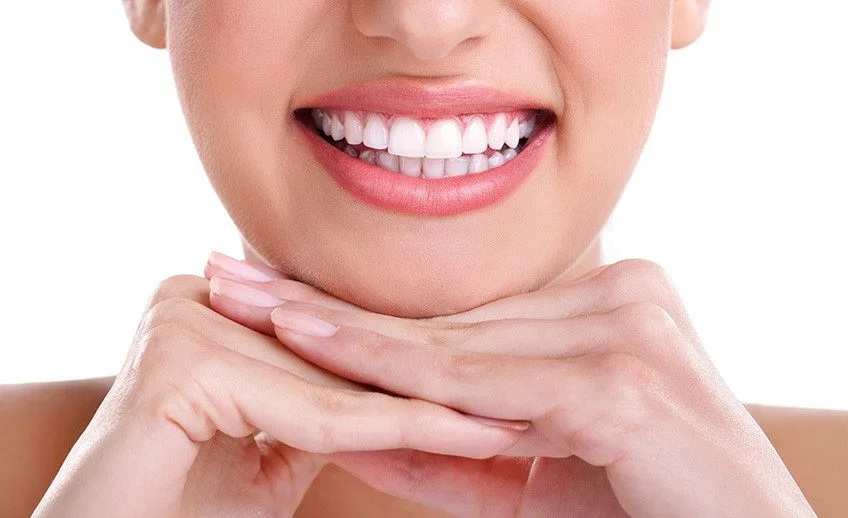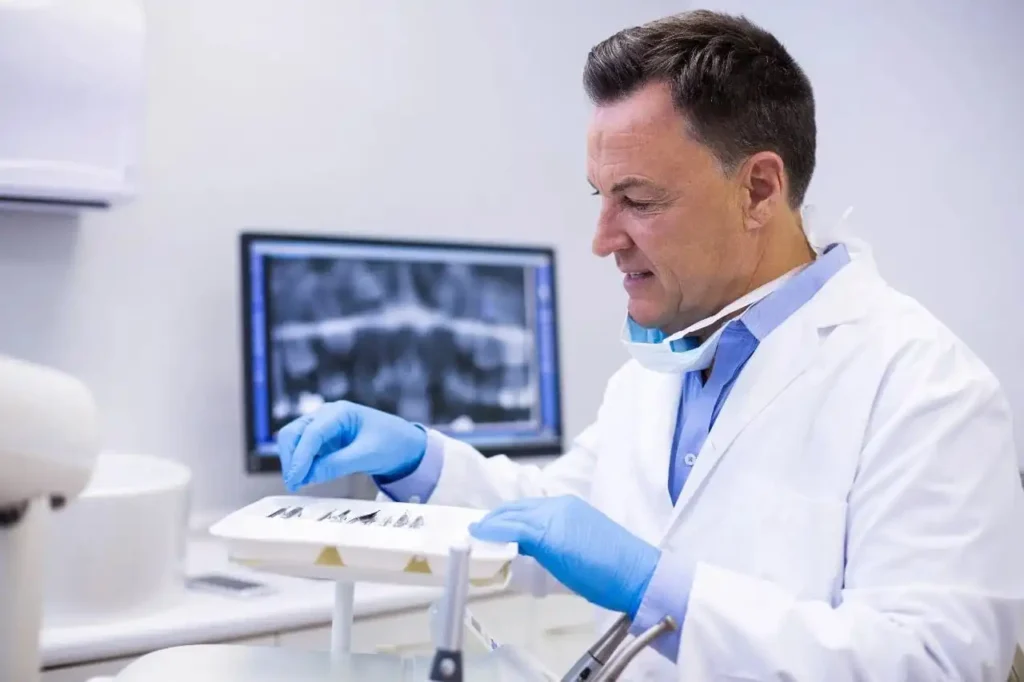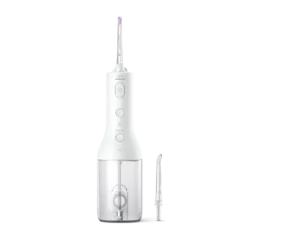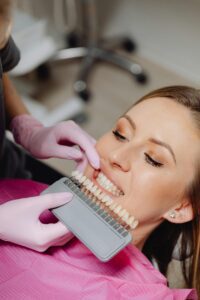Cosmetic dentistry enhances the appearance of teeth and gums. It includes procedures like teeth whitening, veneers, and bonding.
Cosmetic dentistry focuses on improving the aesthetics of your smile. It offers a range of treatments designed to enhance the look of your teeth, gums, and overall smile. Popular procedures include teeth whitening, which brightens discolored teeth, and veneers that cover imperfections.
Bonding repairs chipped or cracked teeth, while orthodontic treatments straighten misaligned teeth. Cosmetic dentistry can boost confidence and improve oral health. Many seek these treatments for a more attractive smile. An experienced cosmetic dentist customizes treatments to meet individual needs, ensuring optimal results.

The Evolution Of Cosmetic Dentistry
Cosmetic dentistry has transformed many smiles. The journey from rudimentary procedures to advanced techniques is fascinating. The evolution of cosmetic dentistry showcases innovation and dedication to aesthetics and function.
Origins Of Cosmetic Dentistry
Cosmetic dentistry has ancient roots. Early civilizations valued aesthetic dental work. Egyptians used gold for dental crowns. Etruscans crafted dentures from ivory. These early practices were rudimentary but showed the importance of a beautiful smile.
In the 18th century, Pierre Fauchard, the father of modern dentistry, introduced dental prosthetics. He used human teeth and metal to create dentures. This marked the beginning of more sophisticated cosmetic procedures.
By the 19th century, porcelain became popular for dental work. Porcelain teeth were more natural-looking and durable. Dental practices evolved to include teeth whitening and alignment. These early advancements laid the groundwork for modern techniques.
Important milestones in early cosmetic dentistry:
- Ancient gold and ivory dentures
- Pierre Fauchard’s dental prosthetics
- 19th-century porcelain teeth
Technological Advancements In Cosmetic Dentistry
Today’s cosmetic dentistry is highly advanced. Technological advancements have revolutionized procedures. Digital imaging allows precise planning. Dentists can now create 3D models of teeth. This ensures accuracy and better results.
Laser technology has also made an impact. Lasers can whiten teeth, reshape gums, and remove decay. This technology is less invasive and reduces recovery time.
Modern materials have also improved cosmetic dentistry. Composite resins blend seamlessly with natural teeth. Ceramic crowns are more durable and lifelike. These materials enhance both function and aesthetics.
Key technological advancements include:
- Digital imaging and 3D modeling
- Laser technology for various procedures
- Advanced materials like composite resins and ceramics
Table of technological advancements:
| Technology | Benefits |
| Digital Imaging | Precision and accuracy |
| Laser Technology | Minimally invasive, quick recovery |
| Advanced Materials | Natural look, enhanced durability |
These innovations have made cosmetic dentistry more effective and accessible. Patients can now achieve their dream smiles with minimal discomfort and excellent results.
Popular And Different Types Of Cosmetic Dental Procedures
Cosmetic dentistry offers a variety of procedures to enhance your smile. These treatments can help you achieve the perfect teeth. Let’s explore some popular and different types of cosmetic dental procedures.
Teeth Whitening
Teeth whitening is one of the most popular cosmetic dental procedures. It helps to brighten your smile by removing stains and discoloration. This procedure can be done at the dentist’s office or at home with a kit.
There are several benefits to teeth whitening:
- Improves appearance and boosts confidence
- Removes stubborn stains from coffee, tea, and smoking
- Non-invasive and quick results
Two main types of teeth whitening methods include:
| Method | Description |
| In-Office Whitening | Professional treatment done by a dentist, provides quick and dramatic results. |
| At-Home Whitening | Whitening kits are provided by the dentist for home use, offering convenience and gradual results. |
Dental Veneers
Dental veneers are thin shells placed over the front surface of teeth. They are custom-made to fit your teeth perfectly. Veneers can change the color, shape, size, and length of your teeth.
Benefits of dental veneers include:
- Natural tooth appearance
- Stain resistance
- Durable and long-lasting
Types of dental veneers:
- Porcelain Veneers: Made from high-quality porcelain, these veneers look very natural and are resistant to stains.
- Composite Veneers: Made from resin material, these veneers are less expensive but may not last as long as porcelain veneers.
Dental Implants
Dental implants are a permanent solution for missing teeth. They involve placing a titanium post into the jawbone, which acts as a root for the replacement tooth.
Key benefits of dental implants include:
- Improved appearance and speech
- Enhanced comfort and durability
- Bone preservation
The process of getting dental implants involves:
- Consultation: The dentist evaluates your dental health and discusses the best treatment plan.
- Surgery: The titanium post is surgically placed into the jawbone.
- Healing: The jawbone needs time to heal and integrate with the implant.
- Placement: The final crown is attached to the implant, completing the procedure.
Orthodontic Treatments
Orthodontic treatments are used to correct misaligned teeth and jaws. These treatments can improve your bite and overall dental health.
Common types of orthodontic treatments include:
- Braces: Traditional metal braces are the most common. They use brackets and wires to gradually move teeth into place.
- Clear Aligners: These are a popular alternative to braces. They are clear, removable trays that move teeth over time.
- Retainers: These devices are used after braces to maintain the position of straightened teeth.
Benefits of orthodontic treatments:
- Improved oral health
- Enhanced appearance and confidence
- Better bite and jaw alignment
Orthodontic treatments can be suitable for both children and adults, offering a path to a healthier, more attractive smile.
Benefits Of Cosmetic Dentistry
Cosmetic dentistry has revolutionized the way people perceive their smiles. Beyond aesthetics, it offers numerous benefits that positively impact overall well-being. From boosting self-esteem to enhancing oral health and restoring functionality, the advantages of cosmetic dentistry are profound.
Improved Confidence
One of the most significant benefits of cosmetic dentistry is the boost in confidence. A bright, beautiful smile can transform your self-image. People who are unhappy with their teeth often hide their smiles, leading to a lack of confidence in social situations.
Cosmetic dentistry addresses various aesthetic issues:
- Teeth whitening eliminates stains and discoloration.
- Veneers correct chipped or misshapen teeth.
- Orthodontics align crooked or misaligned teeth.
With these treatments, individuals feel more attractive and confident. They smile more freely, leading to better social interactions and opportunities. A confident smile can also enhance professional success. Studies show that people with attractive smiles are perceived as more competent and trustworthy.
Enhanced Oral Health
Cosmetic dentistry not only improves appearance but also enhances oral health. Procedures like crowns and veneers protect and strengthen damaged teeth. This prevents further decay and dental issues. Well-aligned teeth are easier to clean. Straight teeth reduce the risk of cavities and gum disease. Misaligned teeth can create tight spaces that trap food and bacteria.
Here are some ways cosmetic dentistry promotes oral health:
| Procedure | Health Benefit |
| Braces/Invisalign | Corrects alignment, improving bite and reducing wear |
| Veneers | Protects enamel from damage |
| Crowns | Restores strength to weak teeth |
By addressing these issues, cosmetic dentistry helps maintain a healthier mouth. It ensures teeth and gums stay in optimal condition, reducing the need for future dental work.
Restored Functionality
Cosmetic dentistry also restores functionality to damaged or missing teeth. Procedures such as dental implants and bridges fill gaps caused by tooth loss. This enables better chewing and speaking abilities. Missing teeth can lead to shifting of remaining teeth. This can cause bite issues and jaw pain.
Functional benefits of cosmetic dentistry include:
- Improved chewing efficiency
- Enhanced speech clarity
- Balanced bite and reduced jaw pain
Restorative procedures ensure that teeth work properly. This enhances overall quality of life. With the proper function restored, individuals can enjoy their favorite foods. They can also speak without hindrance and maintain a healthy, pain-free jaw.
Choosing A Cosmetic Dentist
Choosing the right cosmetic dentist is crucial for achieving the smile you desire. Cosmetic dentistry offers various procedures, from teeth whitening to veneers and full smile makeovers. The right dentist will help you achieve your goals safely and effectively. This guide will help you find a qualified cosmetic dentist by exploring their qualifications, patient reviews, and the technology they use.
Qualifications And Experience
Qualifications and experience play a significant role in the effectiveness of cosmetic dental procedures. A qualified cosmetic dentist should have a degree from an accredited dental school. They should also have specialized training in cosmetic dentistry. Look for certifications from reputable organizations like the American Academy of Cosmetic Dentistry (AACD).
Experience matters because it reflects a dentist’s skill and familiarity with various procedures. A dentist with many years of experience is likely to have handled a range of cases, enhancing their expertise. Here are some key points to consider:
- Years of Practice: More years often mean more expertise.
- Specialized Training: Additional courses and certifications in cosmetic dentistry.
- Before and After Photos: Visual proof of their work.
You can also ask the dentist about their continuing education. This shows their commitment to staying updated with the latest techniques and technologies.
Patient Reviews And Testimonials
Patient reviews and testimonials provide real-world insights into a dentist’s skills and patient care. Reviews can be found on the dentist’s website, Google, Yelp, and other platforms. Look for consistent positive feedback on:
- Quality of Work: Patients should be happy with the results.
- Patient Care: The dentist should be friendly and professional.
- Office Environment: The clinic should be clean and welcoming.
Testimonials on the dentist’s website are also valuable. These are often detailed accounts of patients’ experiences. Here are some aspects to consider:
- Detailed Experiences: Look for detailed stories about procedures and outcomes.
- Before and After: Photos or videos showing the transformation.
- Ratings: High ratings usually indicate good patient satisfaction.
Reviews and testimonials help you gauge the reliability and quality of the dentist’s work. Always read multiple reviews to get a balanced view.
Technology And Techniques Used
The technology and techniques a cosmetic dentist uses can significantly impact the quality of your results. Advanced technology ensures procedures are more efficient, less painful, and have quicker recovery times. Here are some technologies to look for:
| Technology | Benefits |
| Digital X-Rays | Less radiation, clearer images |
| Intraoral Cameras | Better diagnosis and patient education |
| Laser Dentistry | Less pain, faster healing |
Modern techniques also make a big difference. For example:
- 3D Printing: For accurate dental models and restorations.
- CAD/CAM Technology: For precise crowns and veneers.
- Teeth Whitening Systems: Advanced systems for quicker, whiter results.
A dentist who uses the latest technology and techniques is more likely to provide superior results. Always ask about the tools and methods they use.
Cost Considerations
Cosmetic dentistry enhances smiles and boosts confidence. Yet, cost considerations play a significant role in decision-making. Understanding the factors and insurance coverage helps plan your journey to a perfect smile.
Factors Affecting Cost
Various factors influence the cost of cosmetic dentistry. These factors determine the final price you might pay for your desired dental enhancements.
- Type of Procedure: Different procedures have different costs. Teeth whitening costs less than dental implants.
- Materials Used: High-quality materials, like porcelain veneers, increase the cost.
- Location of the Clinic: Clinics in urban areas may charge more than those in rural areas.
- Expertise of the Dentist: Experienced dentists might charge higher fees due to their expertise and reputation.
- Number of Visits: Some treatments require multiple visits, adding to the overall cost.
The table below shows an approximate cost range for common cosmetic dental procedures:
| Procedure | Cost Range |
| Teeth Whitening | $200 – $1,000 |
| Porcelain Veneers | $800 – $2,500 per tooth |
| Dental Implants | $1,500 – $6,000 per implant |
| Invisalign | $3,000 – $8,000 |
Insurance Coverage For Cosmetic Dentistry
Insurance coverage for cosmetic dentistry varies. Most insurance plans do not cover cosmetic procedures. They often consider them elective and not medically necessary.
- Dental Insurance Plans: Basic plans cover preventive and restorative treatments. Cosmetic procedures usually aren’t included.
- Coverage Exceptions: Some plans cover procedures that also improve dental health. For example, dental crowns after a root canal.
- Flexible Spending Accounts (FSAs): FSAs might cover part of the cost. Check with your provider for eligible expenses.
Here are some tips to manage costs if insurance doesn’t cover your procedure:
- Payment Plans: Many clinics offer payment plans. Spread the cost over several months.
- Discount Programs: Some dental offices have discount programs. These reduce the overall cost of procedures.
- Shop Around: Compare prices from different clinics. Ensure you get quality care at a reasonable price.
Understanding your options helps you make informed decisions about cosmetic dentistry. Plan ahead to achieve the smile you’ve always wanted.
Risks And Complications
Cosmetic dentistry can transform your smile, but it’s important to understand the risks and complications. Knowing these risks helps you make an informed decision about your dental care. While many cosmetic procedures are safe, every treatment carries some potential risks.
Potential Risks Of Cosmetic Dentistry Procedures
Cosmetic dentistry procedures, like any medical treatment, have potential risks. Here are some common risks you should be aware of:
- Tooth Sensitivity: After treatments like teeth whitening or veneers, your teeth might become more sensitive to hot and cold.
- Gum Irritation: Treatments involving the gums can cause irritation or inflammation.
- Infection: Any procedure that involves cutting or drilling can potentially lead to infection if not done properly.
- Enamel Damage: Procedures like veneers or crowns may involve removing some enamel, which is irreversible.
- Uneven Results: Sometimes, the final look may not be symmetrical or as expected.
Here is a table summarizing the potential risks:
| Risk | Description |
| Tooth Sensitivity | Increased sensitivity to temperature changes |
| Gum Irritation | Inflammation or swelling of the gums |
| Infection | Possible infection at the site of treatment |
| Enamel Damage | Permanent loss of tooth enamel |
| Uneven Results | Asymmetrical or unsatisfactory appearance |
How To Minimize Risks
Minimizing risks in cosmetic dentistry involves careful planning and choosing the right professional. Here are some tips to help you:
- Choose a Qualified Dentist: Ensure your dentist is experienced and certified in cosmetic dentistry.
- Discuss Your Medical History: Inform your dentist about any medical conditions or medications you are taking.
- Follow Aftercare Instructions: Proper aftercare is crucial to avoid complications and ensure the best results.
- Maintain Oral Hygiene: Regular brushing and flossing can prevent infections and other issues.
- Avoid Hard Foods: After certain procedures, avoid hard or sticky foods that can damage your teeth.
Here’s a checklist to help minimize risks:
- Research and choose a qualified cosmetic dentist.
- Discuss all potential risks and benefits with your dentist.
- Follow pre- and post-procedure care instructions.
- Maintain good oral hygiene practices.
- Schedule regular follow-up appointments with your dentist.
By following these steps, you can significantly reduce the risks and enjoy the benefits of cosmetic dentistry.
Trends In Cosmetic Dentistry
Cosmetic dentistry has come a long way in recent years. The focus has shifted from merely improving smiles to ensuring that these improvements look as natural as possible. Recent trends in cosmetic dentistry reflect this evolution. Dentists now use advanced techniques and materials to provide stunning, yet subtle, results. Let’s explore some of these exciting trends in detail.
Focus On Natural-looking Results
The desire for a natural-looking smile has never been higher. Modern cosmetic dentistry prioritizes results that blend seamlessly with your natural teeth. Dentists achieve this by considering the shape, color, and texture of your existing teeth. Here are some ways they do this:
- Customized Veneers: Veneers are now tailored to match the exact shade and shape of your teeth. This makes them look incredibly natural.
- 3D Imaging: Dentists use 3D imaging to design treatments that fit your unique dental structure. This technology ensures a perfect match.
- Teeth Whitening: Modern whitening techniques focus on achieving a natural shade, avoiding the overly bright “fake” look.
Take a look at the comparison table below to understand the differences between traditional and modern approaches:
| Traditional Approach | Modern Approach |
| One-size-fits-all veneers | Customized veneers |
| Manual color matching | 3D imaging for precise color |
| Overly bright whitening | Natural shade whitening |
Innovations In Materials And Procedures
Advancements in materials and procedures are driving the latest trends in cosmetic dentistry. These innovations make treatments more efficient and effective. Here are some notable innovations:
- Composite Resins: New composite resins mimic the natural translucency of tooth enamel. They are durable and blend seamlessly with your teeth.
- Laser Dentistry: Lasers are now used for various procedures, from gum reshaping to cavity treatment. They offer precision and faster healing times.
- Digital Smile Design: Dentists use software to create a digital model of your smile. This allows for precise planning and exceptional results.
Below is a list of procedures that have seen significant improvements:
- Teeth Whitening: New gels and lights make the process quicker and more effective.
- Dental Implants: Advanced materials ensure implants look and feel like natural teeth.
- Orthodontics: Clear aligners and faster treatment times make orthodontic corrections more appealing.
These innovations mean that achieving a beautiful, natural smile is more attainable than ever. The focus on advanced materials and techniques ensures long-lasting and aesthetically pleasing results.
The Future Of Cosmetic Dentistry
Cosmetic Dentistry has come a long way in recent years. Advances in technology and techniques have made it possible to achieve stunning results. Looking forward, the future of cosmetic dentistry holds even more promise. New methods and innovations will continue to evolve, providing even better outcomes for patients. This section will explore what lies ahead in the field of cosmetic dentistry.
Predictions For Advancements
The future of cosmetic dentistry is bright. Experts predict several advancements that will revolutionize the field. These advancements aim to improve patient experience, reduce recovery times, and enhance the quality of results.
Key Predictions:
- 3D Printing: 3D printing will allow for the creation of precise dental models and custom dental implants.
- Regenerative Dentistry: Stem cell research will pave the way for regenerative treatments, potentially allowing teeth to repair themselves.
- Minimally Invasive Procedures: Techniques will become less invasive, reducing recovery time and discomfort.
- Digital Smile Design: Advanced software will enable dentists to design and preview smile transformations before any procedure begins.
These advancements will not only improve the aesthetics of dental work but also enhance its functionality and durability. Patients will benefit from faster, more comfortable treatments and longer-lasting results.
Integration Of Technology In Cosmetic Dentistry
Technology plays a crucial role in the future of cosmetic dentistry. Integrating cutting-edge technology into dental practices will transform patient care.
Significant Technological Integrations:
- Intraoral Scanners: These scanners create detailed, 3D images of the mouth, helping dentists plan precise treatments.
- Laser Dentistry: Lasers will be used for a variety of procedures, such as teeth whitening and gum contouring, offering more accurate results.
- Artificial Intelligence: AI will assist in diagnosing dental issues and planning treatments, enhancing accuracy and efficiency.
- Teledentistry: Virtual consultations will become more common, making it easier for patients to access expert advice and care.
Integrating these technologies into cosmetic dentistry will lead to better patient outcomes. It will also make dental care more accessible and convenient for everyone. Dentists and patients alike will benefit from these technological advancements.
Frequently Asked Questions
What Is Meant By Cosmetic Dentistry?
Cosmetic dentistry focuses on improving dental aesthetics. It enhances the appearance of teeth, gums, and smiles. Procedures include teeth whitening, veneers, and crowns.
What Is The Difference Between A Cosmetic Dentist And A Regular Dentist?
A cosmetic dentist focuses on improving the appearance of teeth and smiles. A regular dentist addresses overall oral health.
Is There A Difference Between Esthetic Dentistry And Cosmetic Dentistry?
Esthetic and cosmetic dentistry focuses on improving smiles. Cosmetic dentistry enhances appearance, while esthetic dentistry combines function and beauty.
How Much Do Veneers Cost In Austin Texas?
Veneers in Austin, Texas typically cost between $800 and $2,500 per tooth. Prices vary based on materials and dentist expertise.
Conclusion
Cosmetic dentistry offers transformative benefits for your smile and confidence. From teeth whitening to veneers, options abound. Consult with a qualified dentist to explore personalized solutions. Invest in your dental health and achieve the smile you’ve always desired. Make an appointment today and start your journey to a brighter, more beautiful smile.






